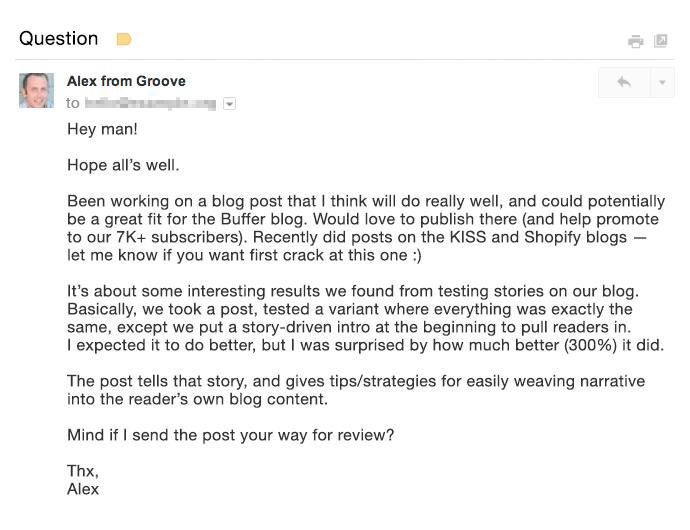Fundraising is the lifeblood of any non-profit. Unfortunately, it also takes a significant amount of time and volunteer effort to make outbound calls and knock on doors. Since most of your volunteers aren’t professionally-trained fundraising experts, it can be difficult to solicit donations and support.
Traditional channels for fundraising are also less effective than they once were. You’ll need to pivot and try new avenues to gain donor support in a digital age.
How to Leverage Content Marketing to Attract Donors and Supporters

Today, much of the marketing and advertising done by major brands and successful nonprofits is based on content. Content marketing takes a variety of forms, and for the nonprofit it offers a great way to share the organization’s story and mission.
As that content spreads and is shared by supporters on social media, visibility will increase and new donors can find their way to you.
The greatest benefit of content marketing for the nonprofit is the low cost. If you have the time, or have volunteers with the right skills, you can produce the content in-house with no cost other than the time you put into it.
Even outsourcing content production can be relatively cheap compared to more expensive traditional marketing channels. A well-written article for $200 that delivers tens of thousands of global visits over the life of the content is a bargain compared to a $5,000 radio spot that might only last 30 days with limited geographic reach.
Content marketing should be part of your overall strategy because your audience is out there on the web, searching for content related to their special interests. The more content you produce and distribute, the better the chances are that those potential donors will find you.
Here’s how to create a content strategy that will attract those donors and supporters to your cause.
Step 1: Know Your Audience
The most successful marketers are able to connect with their audience because they have a strong understanding of who they are. They created a persona that represents their ideal customer using hard data combined with a little assumption.
You need to create one or more personas that represent your ideal donors.
If you’ve done any fundraising in the past, and you have customer data stored, use this to create audience segments. For creating content, you’re most interested in:
- What donors are passionate about
- What gets them excited or fired up, specifically around your cause
- Where they spend their time online (social channels, groups, forums)
- What kind of content they’re most interested in (articles, videos, images)
- What other organizations or causes they follow
Any other information you gather is still useful, and all of it can be used to inform your strategy and content.
Step 2: Choose the Right Content Formats
Content comes in many forms on the web, and not every type of content will be effective with your audience. Some people prefer to read blogs, articles, and ebooks, while others would rather watch a short video or documentary, listen to a podcast, or browse image galleries.

The most common content types include:
- Blog posts on your site
- Articles posted to other sites
- Infographics rich with data
- Videos (long videos on YouTube or short videos on Instagram or Facebook)
- Images
- Slide decks
- Podcasts
- Interactive content (quizzes, polls, and surveys)
Rather than focusing on a single type of content, select a few that are most likely to draw engagement from your audience.
Step 3: Create Content Consistently
Once you’ve settled on the content formats you want to create, start scheduling content production. Take a look at the content commonly being shared around your cause, and brainstorm topics using that content as inspiration.
A virtual assistant can help you schedule those topics using a simple calendar or spreadsheet so you’re producing multiple pieces of content each week. Be sure to stick to your dates and maintain consistency. The more frequent and consistent the content, the better the results.
If you find it difficult to get content published, that’s OK. Use your own experience to craft content outlines, then pass them on to a ghost writer or virtual assistant. A VA is there to do the heavy lifting and help keep you on schedule.
Step 4: Guest Post
While you’re creating posts for your own site, you’ll also want to create articles that are hosted elsewhere. This is a great way to start generating more traffic to your website or blog and to raise awareness for your cause.
Find Relevant Opportunities – There are countless blogs out there in virtually every industry that are happy to accept guest posts, and they often advertise that fact on their websites. To find those opportunities, do some quick Google searches such as:
- Top X blogs (where X is your topic or industry)
- X guest post
- X guest blogger
- X writers needed
- X blog for us
Those searches should return plenty of opportunities.
Check the Guidelines – Every site is different, and will have its own set of guidelines for guest posts and sending over a pitch. Review the guidelines and make sure you can meet the criteria for a submission. Some may want an entire post written, while others are fine with being pitched one or more topics, or just receiving an outline.

If you can’t find guidelines on the site, but it looks like there have been guest authors in the past, use the contact form or find an email address to reach out directly. Ask if the site has any guidelines, and what the preferred process for pitching a topic on the blog is.
Guests posts cost you nothing but the time it takes to produce them, or the minimal cost of having a freelance writer create the content for you.
Step 5: Promote Your Content
Simply creating the content isn’t enough. You need to promote your content to get it in front of a much larger audience. There are lots of ways to promote content, including:
- Content promotion tools and platforms like Quuu, Buzzstream, Google Amp, and Outbrain
- Social pushes through Twitter, Facebook, LinkedIn, and other relevant channels
- Tools like ContentMarketer that help you find influencers and connect for shout-outs and targeted promotions
- Sharing within specific groups and communities
- Paid social with sponsored or boosted posts
- Email lists
- Cross-promoting with influencers and other organizations
Try to create a promotional strategy for various content formats that you can easily follow when new content is published either on your site or online.
Step 6: Repurpose and Distribute
Distribution goes along with promotion to a certain extent, but it involves a little more work. Rather than reposting the same duplicate content on other platforms or channels, you should repurpose the content.

Repurposing is simply the act of taking one piece of content and changing it into a different format without necessarily rewriting it (much.) For example:
Blogs – You could take a blog post and turn it into a video, talk about the highlights on a podcast, or create a series of engaging images using big data or facts from the blog as captions.
Reports – Research reports and industry data can be pulled to create an engaging and easy-to-read infographic, slide deck, or presentation, or fleshed out into a blog post.
Blog Series – If you have a number of posts around related topics, the information can be combined into a comprehensive ebook to give away to supporters and donors.
Videos and Images – Any video from events can be chopped into screen grabs and used to create memes, image carousels, slide decks, or galleries on social channels.
Once you’ve repurposed the content, you can find other platforms where you can post that new content and get it in front of a larger audience.
Common platforms for distributing content include (but aren’t limited to):
- Medium
- LinkedIn Pulse
- SlideShare
- Flickr
- YouTube, Vimeo, and other video hosting platforms
Conclusion
Repeat the process of creating, promoting, and distributing your content across various channels to maximize its reach. While content creation is best handled by your team or outsourced to a freelancer with the right skills, a virtual assistant can largely handle the promotion and distribution of your content.
Remember, the success of your content marketing depends on taking the time to research and understand your audience. That is the cornerstone of your strategy. Profile your supporters to best deliver the content that will captivate them as you share your stories and expertise.
Find this article helpful?
This is just a small sample! Register to unlock our in-depth courses, hundreds of video courses, and a library of playbooks and articles to grow your startup fast. Let us Let us show you!
Submission confirms agreement to our Terms of Service and Privacy Policy.
Already a member? Login
No comments yet.
Start a Membership to join the discussion.
Already a member? Login
